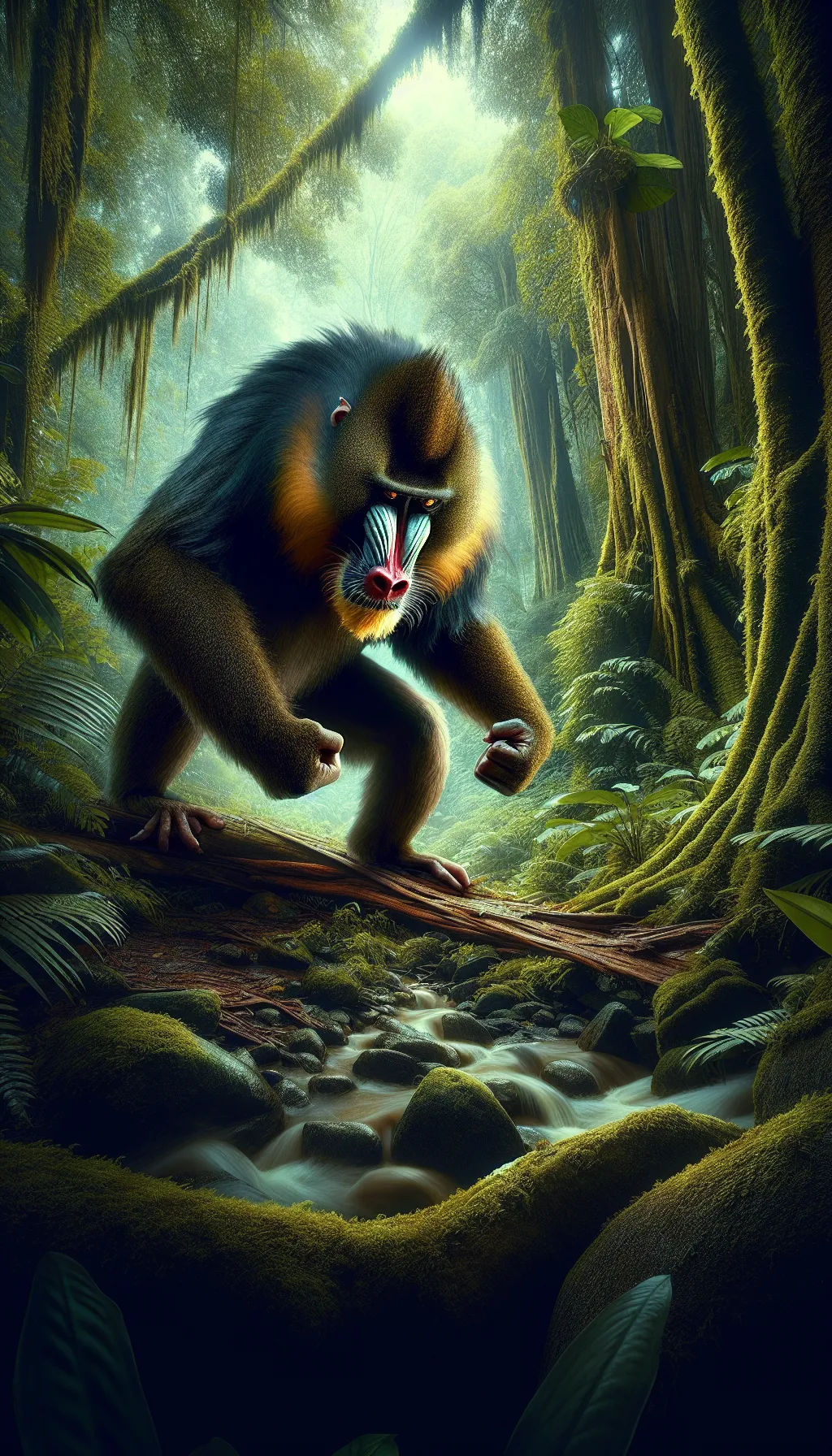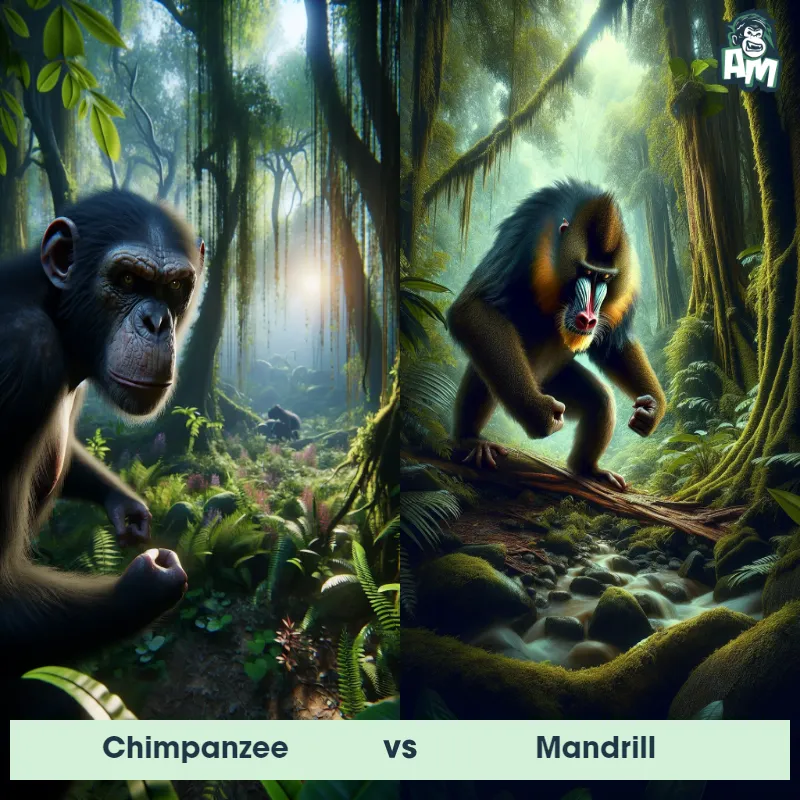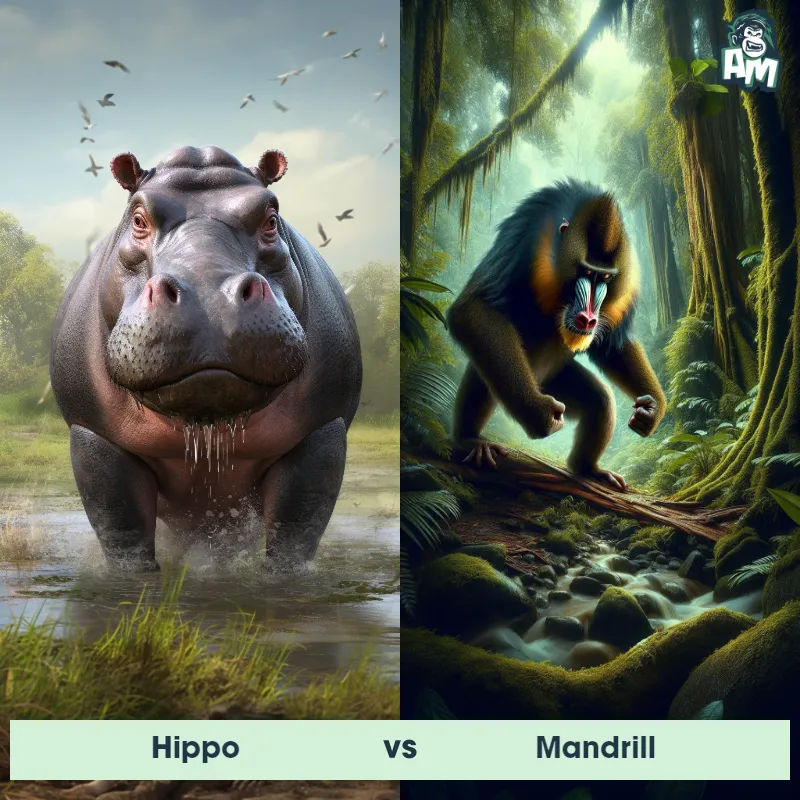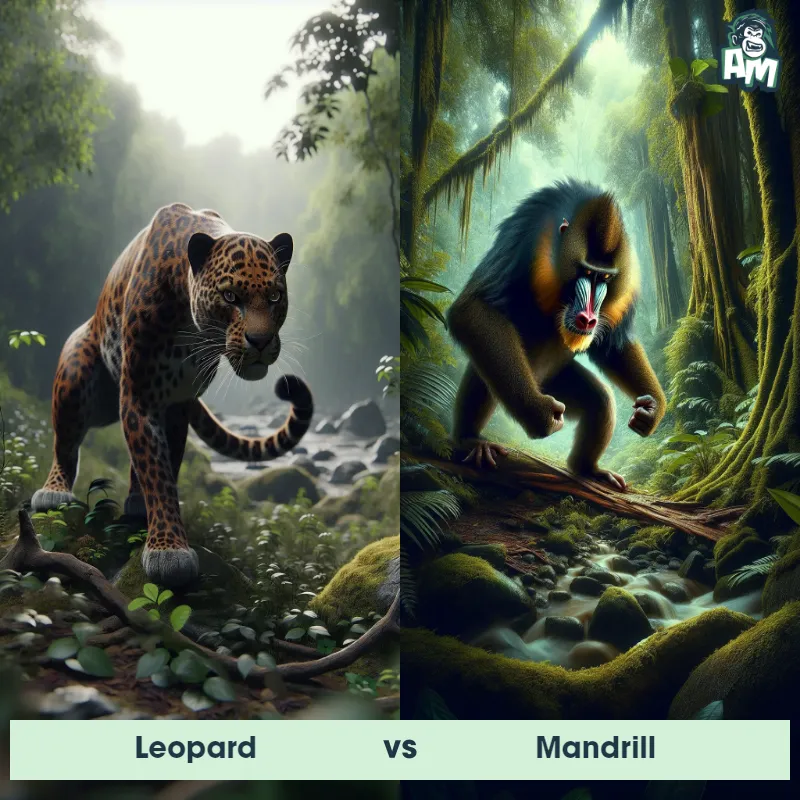The Mandrill
The Mandrill, also known as Mandrillus sphinx, is a primate species native to the rainforests of Central and Western Africa. These highly social animals have distinctive physical traits, including a colorful face with a red stripe down the middle, bright blue ridges on their noses, and vivid markings on their rump. Mandrills have long, sharp canine teeth that are used for defense and display, and their strong, muscular bodies allow them to climb and leap through the trees with agility. They are omnivorous, feeding on a variety of fruits, seeds, leaves, insects, and small vertebrates.

| Mandrill | |
|---|---|
| Size | Up to 3 feet (0.9 meters) in height |
| Weight | Up to 77 pounds (35 kilograms) |
| Speed | 20mph (32km/h) |
| Key Strength | Aggressive canine teeth |
| Biggest Weakness | None in particular |
| Scientific Name | Mandrillus sphinx |
| Family | Cercopithecidae |
| Habitat | Tropical rainforests |
| Geography | Western-central Africa |
| Diet | Omnivorous (fruits, seeds, leaves, insects, small vertebrates) |
| Lifespan | 20 years - 25 years |

The Mandrill
The Mandrill, also known as Mandrillus sphinx, is a primate species native to the rainforests of Central and Western Africa. These highly social animals have distinctive physical traits, including a colorful face with a red stripe down the middle, bright blue ridges on their noses, and vivid markings on their rump. Mandrills have long, sharp canine teeth that are used for defense and display, and their strong, muscular bodies allow them to climb and leap through the trees with agility. They are omnivorous, feeding on a variety of fruits, seeds, leaves, insects, and small vertebrates.
Fun Fact: The Mandrill is the largest species of monkey in the world, with males reaching an average weight of around 30-50 pounds 14-23 kilograms and standing up to 3 feet 1 meter tall.
| Mandrill | |
|---|---|
| Size | Up to 3 feet (0.9 meters) in height |
| Weight | Up to 77 pounds (35 kilograms) |
| Speed | 20mph (32km/h) |
| Key Strength | Aggressive canine teeth |
| Biggest Weakness | None in particular |
| Scientific Name | Mandrillus sphinx |
| Family | Cercopithecidae |
| Habitat | Tropical rainforests |
| Geography | Western-central Africa |
| Diet | Omnivorous (fruits, seeds, leaves, insects, small vertebrates) |
| Lifespan | 20 years - 25 years |
Mandrill Matchups
We use AI to simulate matchups between the Mandrill and other animals. Our simulation considers size, strength, and natural predatory behaviors to determine the most likely outcome.

Can't find the Matchup you want?
Create Your Own MatchupMandrill: Diet, Predators, Aggression, and Defensive Behaviors
What do Mandrills eat?
Mandrills are omnivores, meaning they have a varied diet that includes fruits, seeds, roots, insects, small mammals, and even reptiles. They are known to forage for food on the forest floor and spend a significant amount of time searching for food.
Do Mandrills have any predators?
While Mandrills are large and powerful primates, they still have predators in the wild. They are preyed upon by leopards, pythons, and birds of prey. Young Mandrills are especially vulnerable to predation.
Are Mandrills aggressive?
Mandrills are known to be highly social animals and conflicts within their groups are usually resolved through complex social interactions. However, male Mandrills can display aggression, especially during the mating season when they compete for dominance and access to females.
Do Mandrills fight?
Male Mandrills often engage in physical fights to establish dominance within their social hierarchy. These fights can be intense and involve displays of strength, such as showing off their colorful facial markings and vocalizations to intimidate rivals.
How do Mandrills defend themselves?
Mandrills have several defense mechanisms to protect themselves from predators or threats. They can vocalize loudly to alert other members of their group, use their powerful jaws and sharp teeth to defend themselves, and flee to the safety of trees if necessary.
What is the biggest weakness of Mandrills in a fight?
Despite their strength and agility, the biggest weakness of Mandrills in a fight is their vulnerability to injuries, especially when facing larger predators or multiple attackers. Their colorful facial markings may also make them more visible and attractive targets for predators.
Fun Fact: Unlike most primates, the coloration of a Mandrill's face changes with age and social status. Adult males have more vibrant colors, with the brightest and most intense hues indicating dominance, while females have a more muted color palette.
Fun Fact: Mandrills communicate using a variety of vocalizations, facial expressions, and body postures. They are known for their impressive vocal range, which includes deep grunts, barks, squeals, and even loud roars that can carry over long distances in the dense forest.















